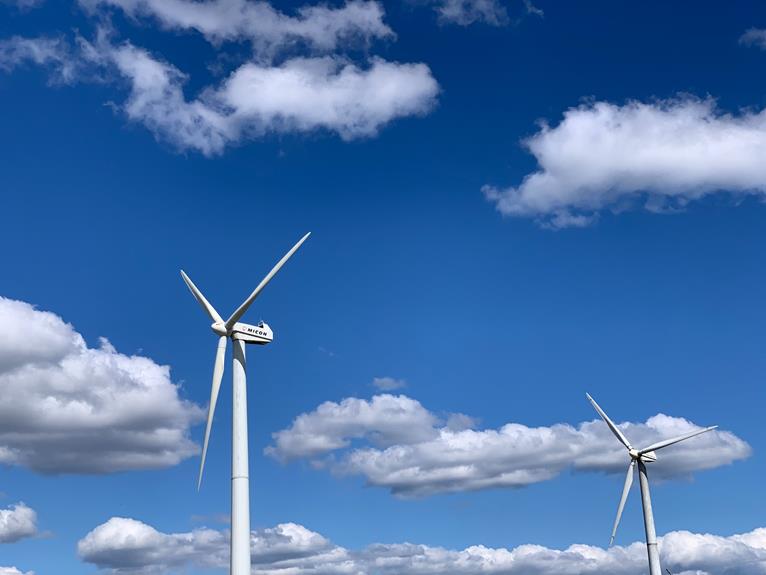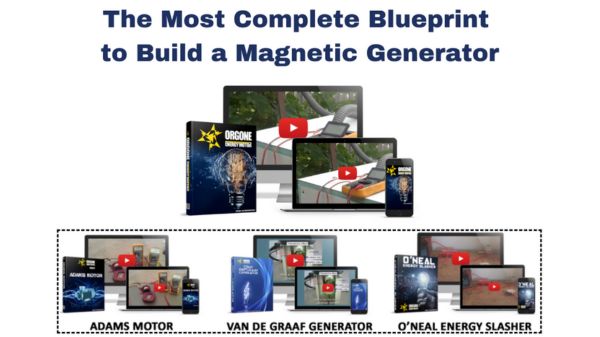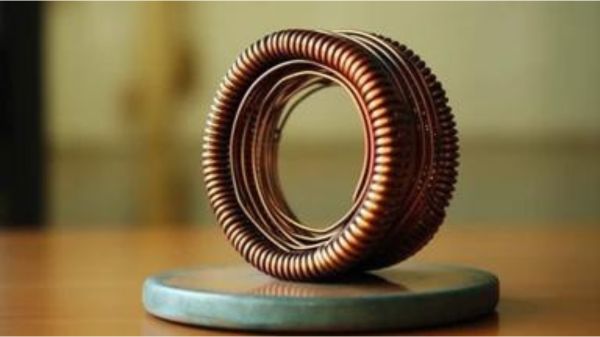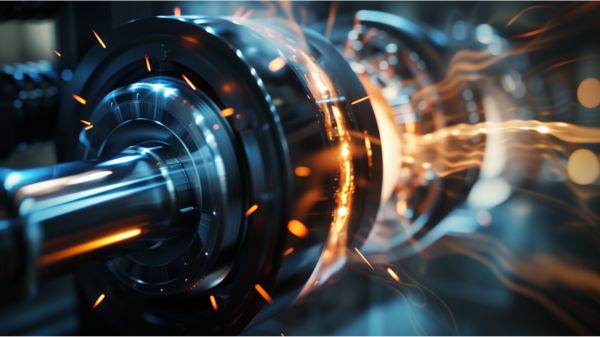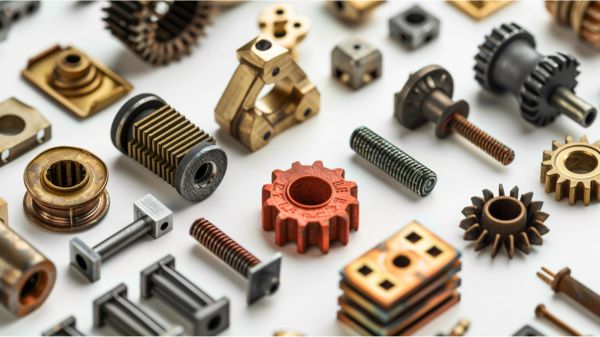10 Magnetic Energy Systems for Efficient Power Generation
Are you curious about how to generate efficient power using magnetic energy? Look no further! In this article, we will explore ten magnetic energy systems that can revolutionize power generation.
From magnetic levitation power generation to magnetic geothermal power generation, these systems offer innovative solutions for a sustainable future.
By harnessing the power of magnets, you can not only generate clean energy but also contribute to a greener planet. Discover how magnetic induction power systems, magnetic flywheel energy storage, and magnetic wind power generation can increase the efficiency of power generation.
Join the movement towards efficient and sustainable energy generation with these ten magnetic energy systems. Let’s explore the possibilities together!
Magnetic Levitation Power Generation
Magnetic levitation power generation is a promising technology that harnesses the power of magnetic energy storage to generate electricity. By utilizing the principles of magnetic levitation, this method offers a unique approach to power generation.
The concept involves using superconducting magnets to suspend a rotor in a state of levitation, eliminating the need for physical contact or friction. As the rotor spins freely, it generates electricity through electromagnetic induction. This innovative technique allows for efficient power generation with minimal energy loss, making it an attractive option for sustainable energy solutions.
Magnetic levitation power generation has the potential to revolutionize the way we generate electricity, providing a reliable and environmentally friendly alternative to traditional power generation methods.
Magnetic Induction Power Systems
To efficiently generate power, utilize magnetic induction power systems. These systems harness the power of magnetic fields to convert mechanical energy into electrical energy.
Magnetic induction power systems consist of a primary coil, which is connected to a power source, and a secondary coil, which is connected to a load. When an alternating current flows through the primary coil, it creates a changing magnetic field.
This changing magnetic field induces a voltage in the secondary coil, which in turn generates an electric current. This process of electromagnetic induction allows for efficient power generation as it eliminates the need for direct physical contact between the primary and secondary coils.
Magnetic Resonance Power Transfer
When implementing magnetic energy systems for efficient power generation, it’s important to consider the concept of magnetic resonance power transfer. This technology utilizes the principle of resonant coupling between two magnetic coils to transfer power wirelessly.
Here are three key points to understand about magnetic resonance power transfer:
- Efficiency: Magnetic resonance power transfer allows for highly efficient power transmission over a distance without the need for physical contact. This leads to minimal power losses and increased overall system efficiency.
- Flexibility: With magnetic resonance power transfer, the position and orientation of the receiving coil can vary, allowing for greater flexibility in the design and implementation of power transfer systems. This adaptability makes it suitable for various applications and environments.
- Scalability: Magnetic resonance power transfer can be scaled up or down to meet different power requirements. This scalability makes it an attractive option for both small-scale and large-scale power generation systems.
Magnetic Flywheel Energy Storage
One key advantage of magnetic flywheel energy storage is its ability to efficiently store and release energy, minimizing power loss during the process.
Magnetic flywheel energy storage systems utilize magnetic levitation and bearings to store energy in the form of rotational kinetic energy. The energy is then released when needed, converting the rotational kinetic energy back into electrical energy. This process is highly efficient, as the magnetic levitation and bearings minimize friction and mechanical losses.
By efficiently storing and releasing energy, magnetic flywheel energy storage systems contribute to efficient power generation. These systems are particularly beneficial in the integration of renewable energy sources, as they can help balance the intermittent nature of these sources.
Magnetic flywheel energy storage systems are a viable solution for energy storage and grid stabilization, playing a crucial role in achieving efficient power generation.
Magnetic Nanogenerators
Magnetic nanogenerators harness magnetic energy on a small scale to generate power efficiently. These devices have the potential to significantly contribute to the development of renewable energy sources. Here are three key points about magnetic nanogenerators:
- Miniature Size: Magnetic nanogenerators are designed to be small, making them suitable for various applications where space is limited, such as wearable electronics or implantable medical devices. Their compact size allows for easy integration into existing systems without requiring significant modifications.
- High Energy Conversion Efficiency: Magnetic nanogenerators have shown impressive energy conversion efficiency, enabling them to convert magnetic energy into electrical energy with minimal losses. This high efficiency is crucial for efficient power generation and reduces the reliance on non-renewable energy sources.
- Sustainable Power Generation: By harnessing magnetic energy, nanogenerators offer a sustainable approach to power generation. Unlike traditional energy sources that deplete natural resources, magnetic nanogenerators utilize the abundant magnetic fields that surround us, providing a renewable and environmentally friendly alternative.
Magnetic Solar Power Generation
When it comes to magnetic solar panel efficiency, the incorporation of magnetic field sensors allows for precise sun tracking, maximizing the capture of solar energy. This not only enhances the overall efficiency of solar panels but also contributes to cost-effectiveness by optimizing energy capture.
The benefits of magnetic power in solar systems extend beyond improved efficiency, as magnetic nanoparticles integrated into solar panels enhance light absorption and reduce energy loss, further increasing their performance.
As the future of magnetic energy unfolds, the utilization of magnetic materials in solar power generation holds great potential for advancing the overall efficiency and effectiveness of renewable energy systems.
Magnetic Solar Panel Efficiency
To maximize the efficiency of your solar panels, incorporate magnetic field sensors for accurate sun tracking. These sensors can detect the position of the sun and adjust the angle and orientation of the solar panels accordingly, ensuring that they’re always facing the sun at the optimal angle for maximum energy generation. By using magnetic field sensors, you can improve the overall efficiency and performance of your solar power system.
In addition to magnetic field sensors, incorporating magnetic nanoparticles into solar panels can further enhance their efficiency. These nanoparticles can help to increase light absorption, allowing the panels to capture more sunlight and convert it into usable energy. Furthermore, magnetic materials play a crucial role in improving the cost-effectiveness of solar power systems, making renewable energy more accessible and affordable.
Benefits of Magnetic Power
By incorporating magnetic power into your solar energy system, you can consistently and efficiently generate electricity, ensuring a reliable source of renewable energy. Magnetic power offers high energy efficiency, allowing for maximum utilization of the available resources.
Unlike traditional solar panels, magnetic solar power generation systems utilize wind turbines equipped with permanent magnets. These magnets enable the conversion of mechanical energy from the wind into electrical energy with minimal losses.
The high energy conversion efficiency of magnetic power systems ensures that a larger portion of the wind’s kinetic energy is transformed into usable electricity. This not only increases the overall output but also reduces the need for additional wind turbines, making magnetic power an attractive option for those seeking to optimize their renewable energy generation.
Future of Magnetic Energy
With magnetic power already revolutionizing solar energy systems, you can now explore the exciting future of magnetic energy and its potential for even more efficient and sustainable power generation.
- Magnetic solar power generation holds the promise of increased energy efficiency and reduced costs, making renewable energy more accessible to a wider population.
- The integration of magnetic nanoparticles into solar panels allows for improved light absorption and decreased energy loss, resulting in higher power generation.
- Advanced magnetic materials and sensors enable accurate sun tracking, optimizing the angle and position of solar panels for maximum energy generation.
The future of magnetic energy in solar power generation is bright, with ongoing research and development focused on enhancing the performance and affordability of renewable energy technologies. By harnessing the power of magnets, we can create a cleaner and more sustainable world, where energy generation is efficient, reliable, and environmentally friendly.
Magnetic Hydroelectric Power Systems
Your magnetic hydroelectric power system’s efficiency can be significantly improved through the utilization of magnetic materials.
Magnetic hydroelectric power systems play a crucial role in energy generation by harnessing the power of flowing water to produce electricity. These systems consist of turbines coupled with generators that contain electromagnets.
As the turbines rotate due to the force of water, the electromagnets generate a magnetic field, which induces a current in the surrounding coils. This current is then converted into electrical energy.
The use of magnetic materials in these systems enhances the efficiency of energy conversion. By optimizing the design and properties of the magnetic materials, power plants can achieve higher output and improved performance.
Not only contribute to renewable energy production, magnetic hydroelectric power systems also offer a sustainable and efficient solution for power generation.
Magnetic Wind Power Generation
Magnetic wind power generation utilizes permanent magnets in wind turbines to generate electricity efficiently and sustainably. This innovative approach to wind power harnesses the power of magnetic materials to enhance energy production and improve the overall performance of wind turbines.
- Permanent magnets, such as neodymium and samarium cobalt, create a magnetic field that interacts with the turbine blades, converting kinetic energy into electrical energy.
- Magnetic bearings in wind turbines reduce friction and mechanical wear, increasing the efficiency and lifespan of the turbines.
- Magnetic field measurement systems ensure that the wind turbine generator systems operate at the highest level of energy efficiency and reliability.
Magnetic Biomass Energy Conversion
To maximize the efficiency of biomass energy conversion, consider incorporating magnetic materials into the process. Magnetic materials play a crucial role in the conversion of biomass into electricity.
By using magnetic energy systems, such as Superconducting Magnetic Energy Storage (SMES), biomass energy generation can become more scalable and efficient. The integration of magnetic materials into biomass energy conversion aligns with our commitment to a cleaner and more sustainable world.
Magnetic energy technologies can contribute to the development of renewable energy sources, ensuring a greener future. These technologies offer advantages such as high energy density, fast response times, and long lifetimes.
By harnessing the power of magnetic materials in biomass energy conversion, we can achieve more efficient and sustainable power generation. This provides a sense of belonging to a community committed to environmental stewardship.
Magnetic Geothermal Power Generation
Geothermal power generation harnesses the Earth’s natural heat to produce electricity. Magnetic geothermal power generation takes this concept further by utilizing magnets to convert geothermal energy into electricity. This innovative approach offers several advantages for efficient power generation:
- Enhanced Efficiency: The use of permanent magnet technology improves the efficiency of geothermal power generation systems. By maximizing the energy conversion process, magnetic geothermal power generation systems can produce more electricity with less input energy.
- Advanced Magnetic Materials: Magnetic materials play a crucial role in the electromagnetic induction process of converting geothermal energy into electricity. The development of advanced magnetic materials further enhances energy conversion and overall system performance.
- Energy Storage Solutions: Magnetic energy storage systems can complement geothermal power generation by providing efficient energy storage solutions for renewable energy sources. This enables better utilization of geothermal energy and allows for a more reliable and stable power supply.
Conclusion
The utilization of magnetic energy systems for efficient power generation has proven to be a game-changer in the renewable energy sector. These systems, such as magnetic levitation power generation and magnetic resonance power transfer, offer innovative solutions that enhance power generation capabilities.
Additionally, the integration of magnetic materials in various renewable energy technologies, including solar panels and wind turbines, further improves their performance and reliability. The implementation of these magnetic energy systems marks a significant step towards a more sustainable and efficient future.
CLICK HERE TO LEARN MORE ABOUT ORGONE MOTOR NOW!
